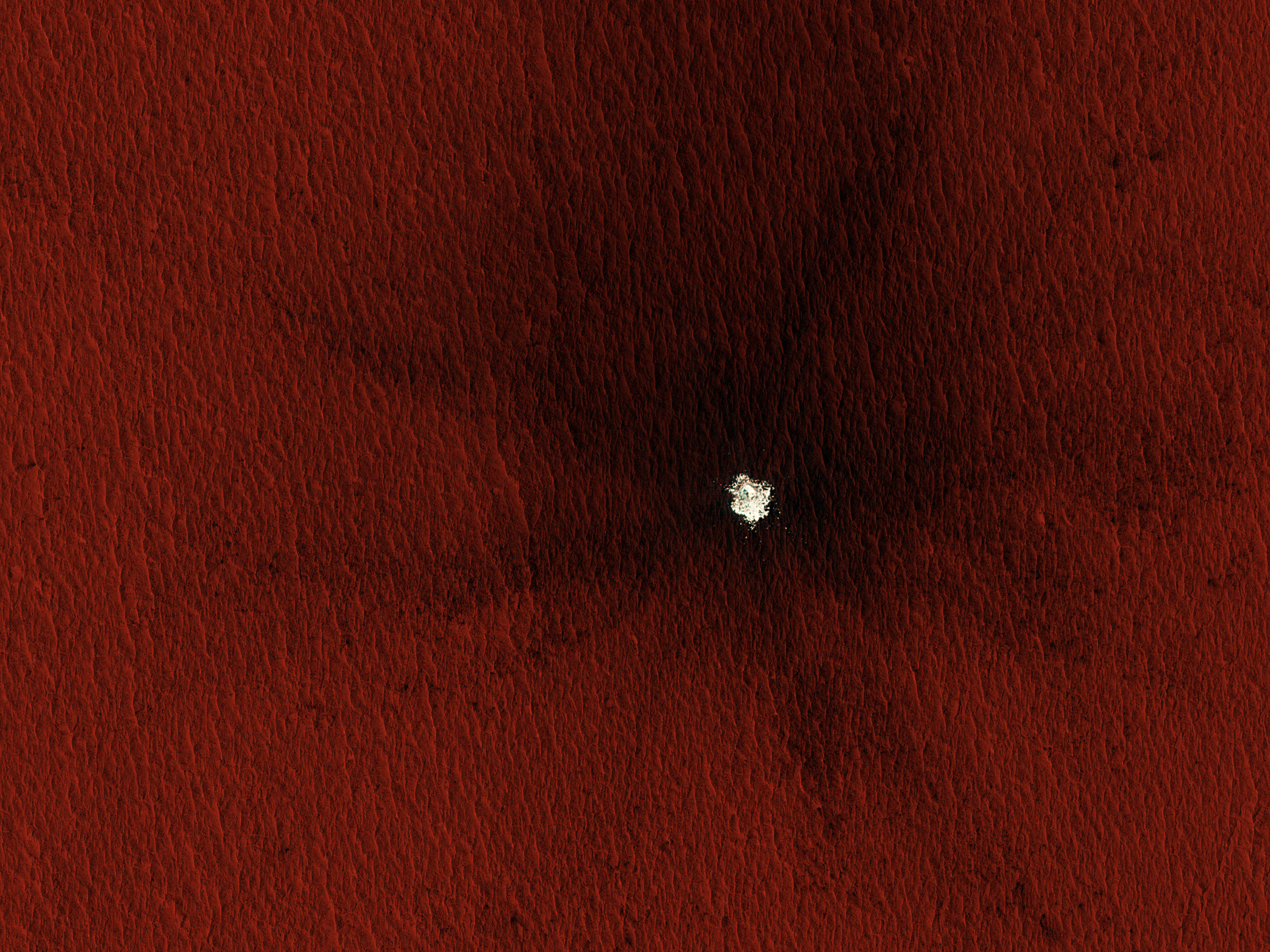Over the past two decades, HiRISE and the Context Camera on MRO have catalogued hundreds of new impact craters. Some of these recent craters, particularly in the mid- to high-latitudes, have excavated buried water-ice that typically is exposed within the crater cavity.
In some cases, these patchy icy deposits and meter-sized blocks of ice are thrown out of the crater and form part of the ejecta.
This image shows one such example of a 13-meter (43 feet) diameter crater in Arcadia Planitia where ice was exposed both in the crater interior and ejecta.
The crater is accompanied by a dark blast zone,
extending almost 850 meters (half a mile) from the center. Subsequent observations permit monitoring of the
gradual sublimation of these ice exposures at high resolution. This provides details about sublimation rates at a given location over time and gives us important insights for understanding near-surface ice-stability and the present-day climate on Mars.
The ice exposed by such craters also helps scientists get an idea of the purity, amount, and the depth of buried ice that relates to the conditions when the ice was initially deposited.
ID:
ESP_025840_2240date: 30 January 2012
altitude: 301 km
https://uahirise.org/hipod/ESP_025840_2240
NASA/JPL-Caltech/University of Arizona
#Mars #science #NASA
